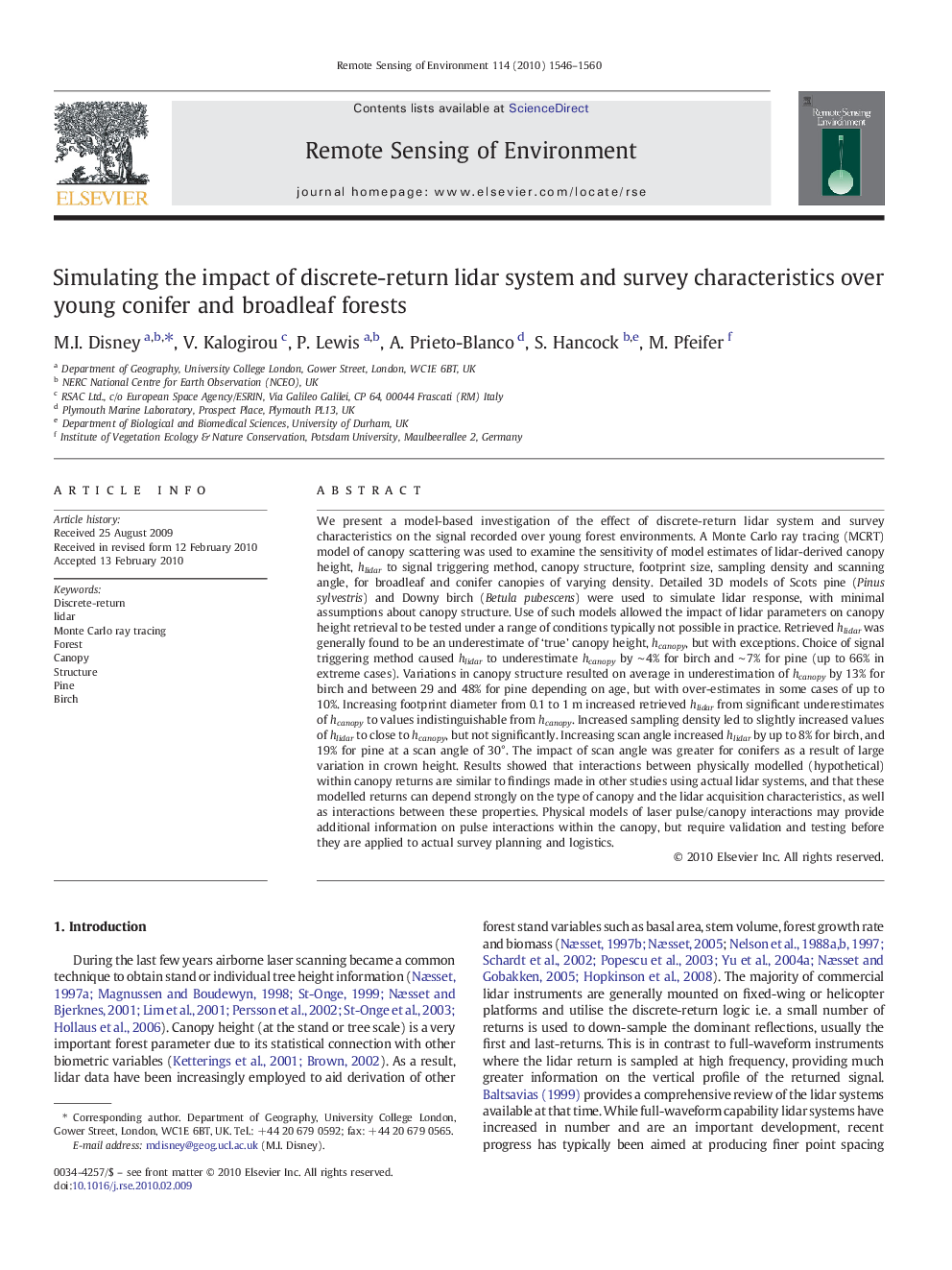| کد مقاله | کد نشریه | سال انتشار | مقاله انگلیسی | نسخه تمام متن |
|---|---|---|---|---|
| 4459740 | 1621302 | 2010 | 15 صفحه PDF | دانلود رایگان |

We present a model-based investigation of the effect of discrete-return lidar system and survey characteristics on the signal recorded over young forest environments. A Monte Carlo ray tracing (MCRT) model of canopy scattering was used to examine the sensitivity of model estimates of lidar-derived canopy height, hlidar to signal triggering method, canopy structure, footprint size, sampling density and scanning angle, for broadleaf and conifer canopies of varying density. Detailed 3D models of Scots pine (Pinus sylvestris) and Downy birch (Betula pubescens) were used to simulate lidar response, with minimal assumptions about canopy structure. Use of such models allowed the impact of lidar parameters on canopy height retrieval to be tested under a range of conditions typically not possible in practice. Retrieved hlidar was generally found to be an underestimate of ‘true’ canopy height, hcanopy, but with exceptions. Choice of signal triggering method caused hlidar to underestimate hcanopy by ∼ 4% for birch and ∼ 7% for pine (up to 66% in extreme cases). Variations in canopy structure resulted on average in underestimation of hcanopy by 13% for birch and between 29 and 48% for pine depending on age, but with over-estimates in some cases of up to 10%. Increasing footprint diameter from 0.1 to 1 m increased retrieved hlidar from significant underestimates of hcanopy to values indistinguishable from hcanopy. Increased sampling density led to slightly increased values of hlidar to close to hcanopy, but not significantly. Increasing scan angle increased hlidar by up to 8% for birch, and 19% for pine at a scan angle of 30°. The impact of scan angle was greater for conifers as a result of large variation in crown height. Results showed that interactions between physically modelled (hypothetical) within canopy returns are similar to findings made in other studies using actual lidar systems, and that these modelled returns can depend strongly on the type of canopy and the lidar acquisition characteristics, as well as interactions between these properties. Physical models of laser pulse/canopy interactions may provide additional information on pulse interactions within the canopy, but require validation and testing before they are applied to actual survey planning and logistics.
Journal: Remote Sensing of Environment - Volume 114, Issue 7, 15 July 2010, Pages 1546–1560